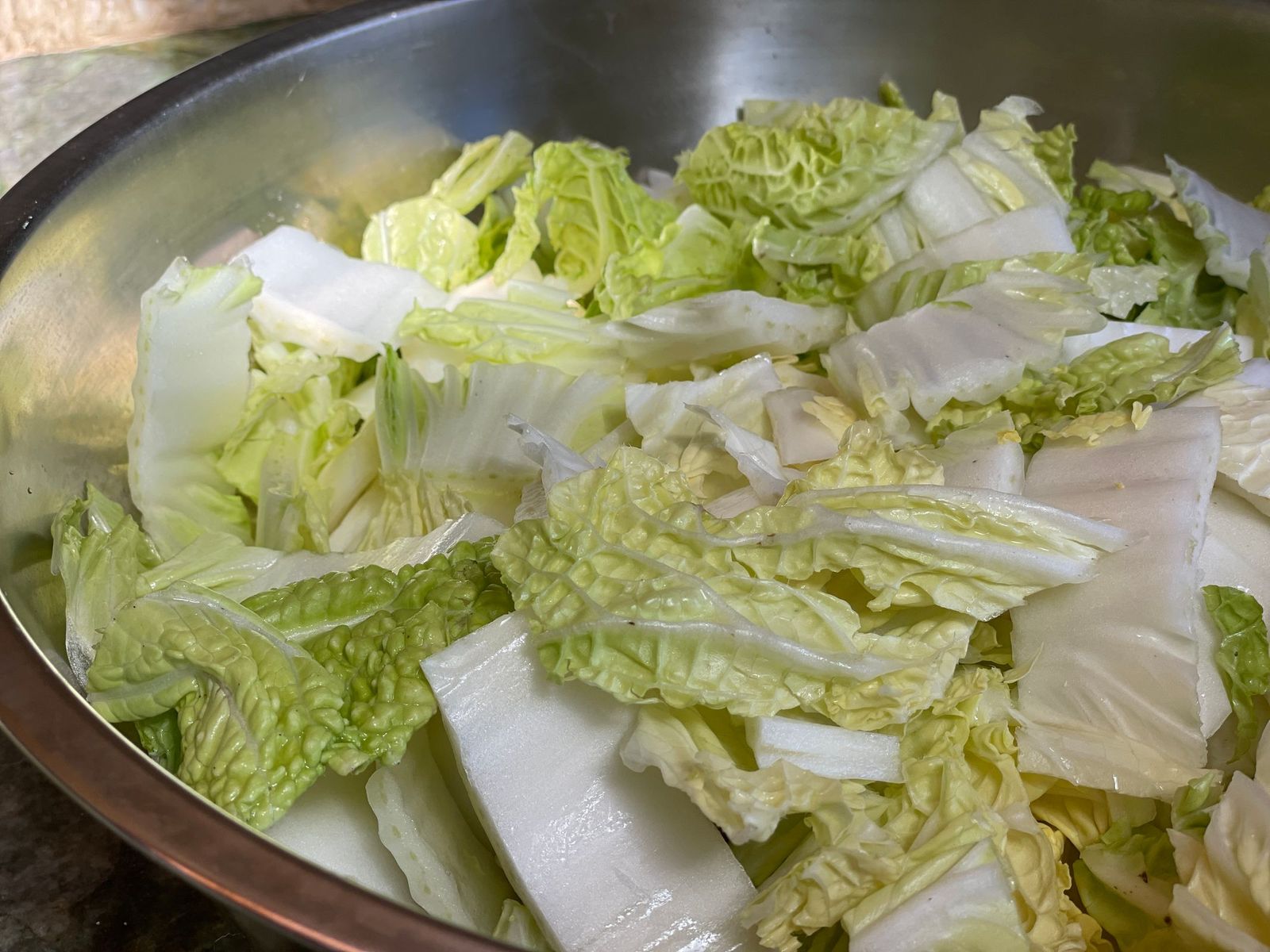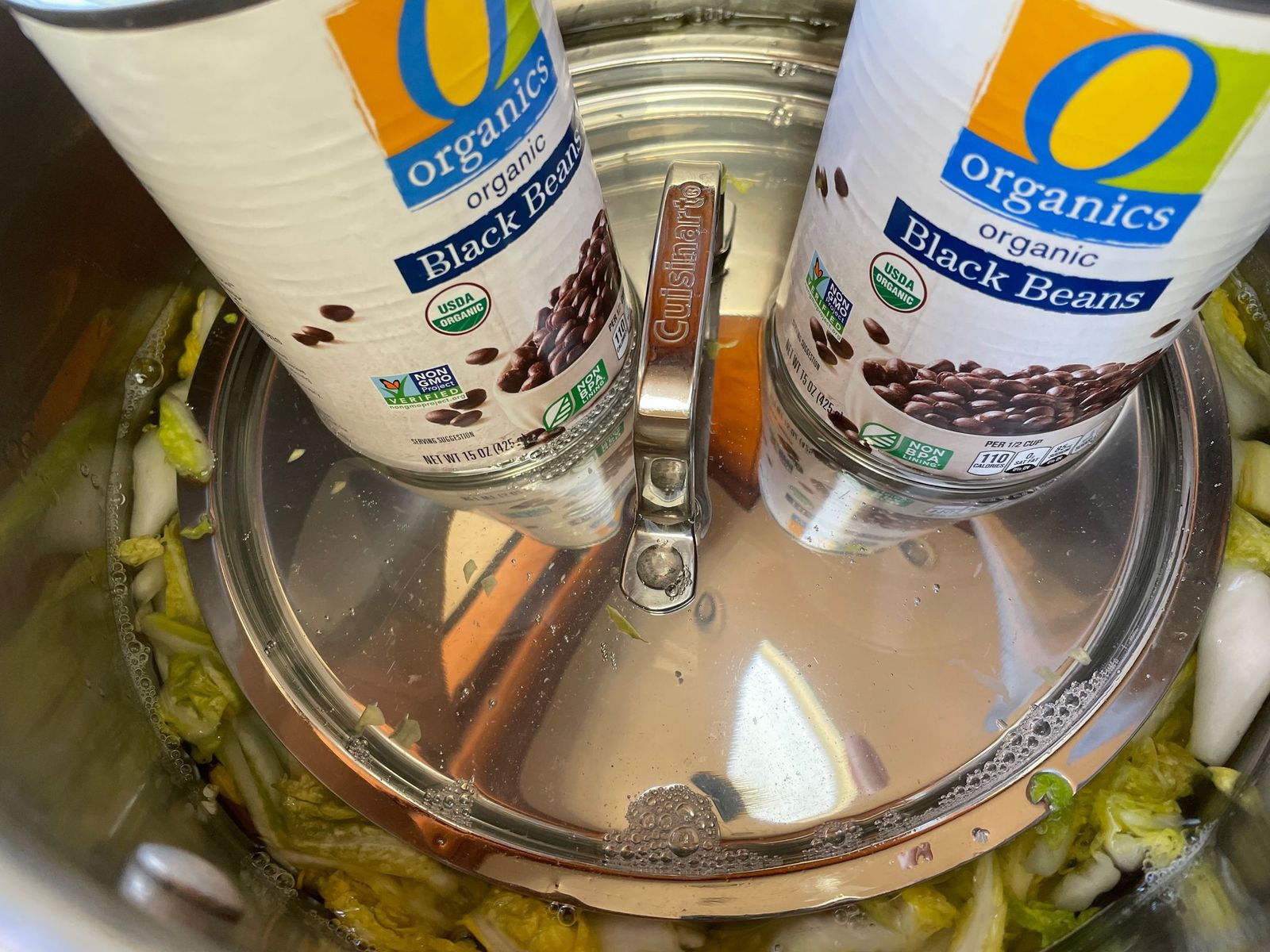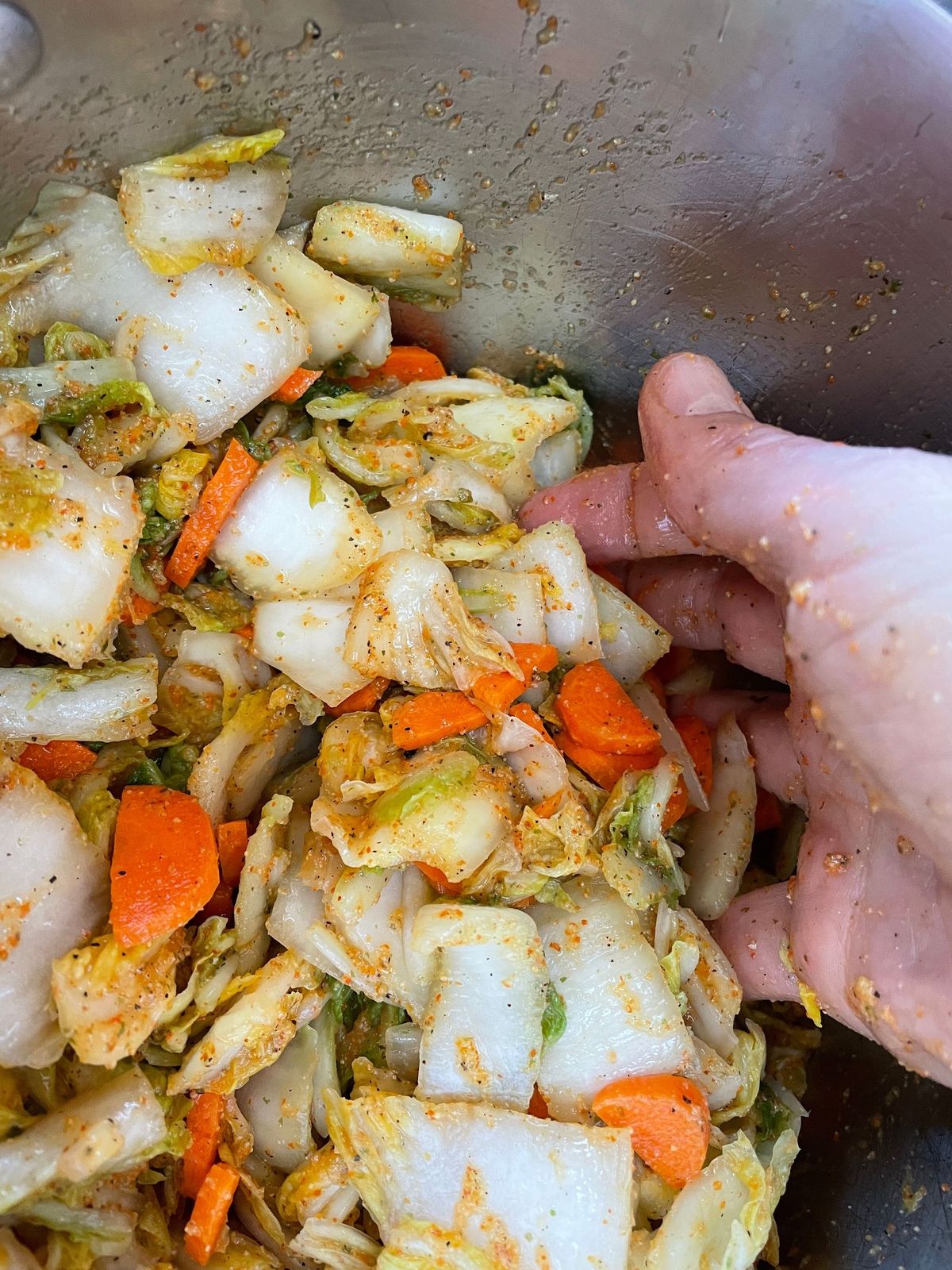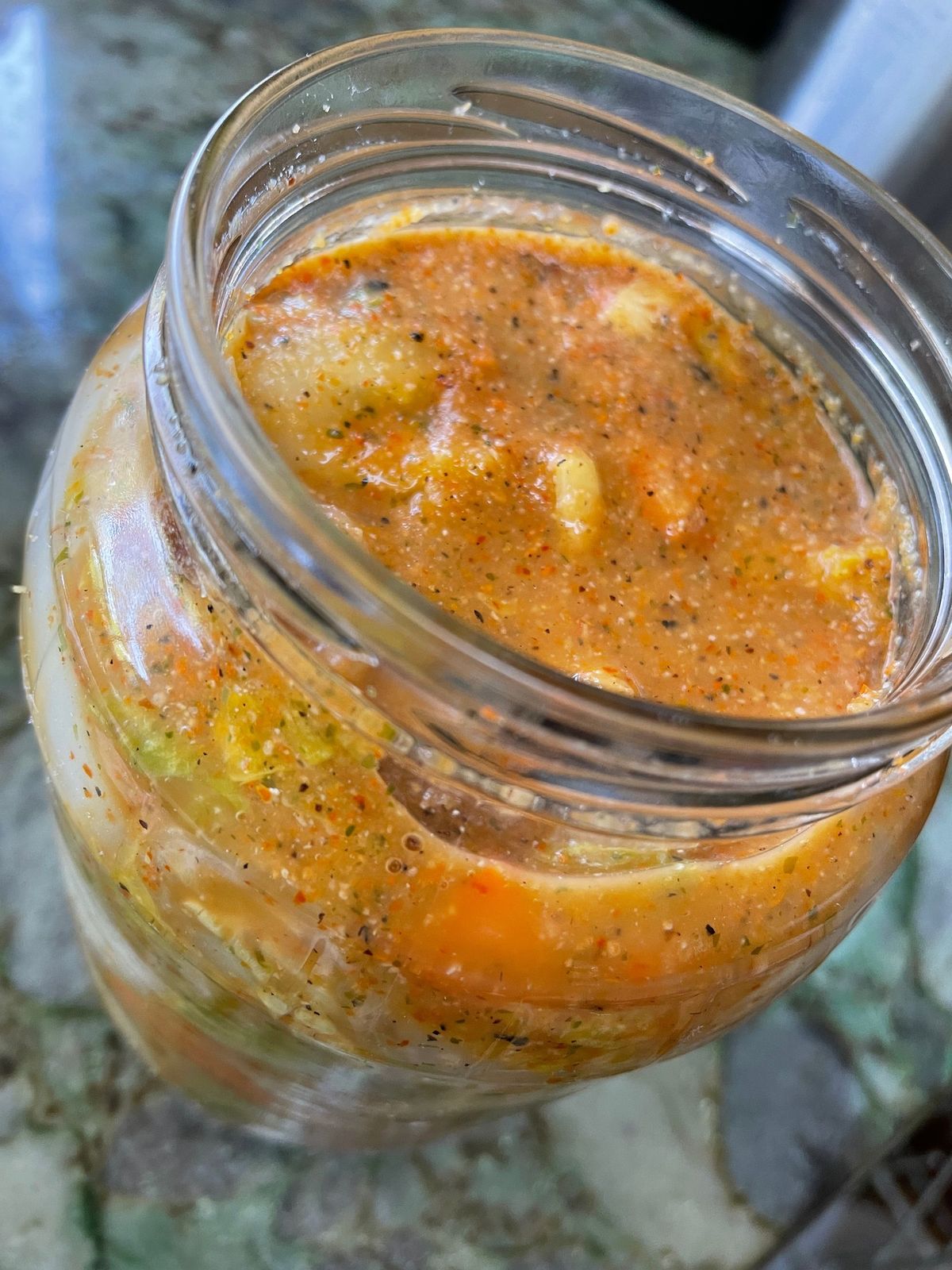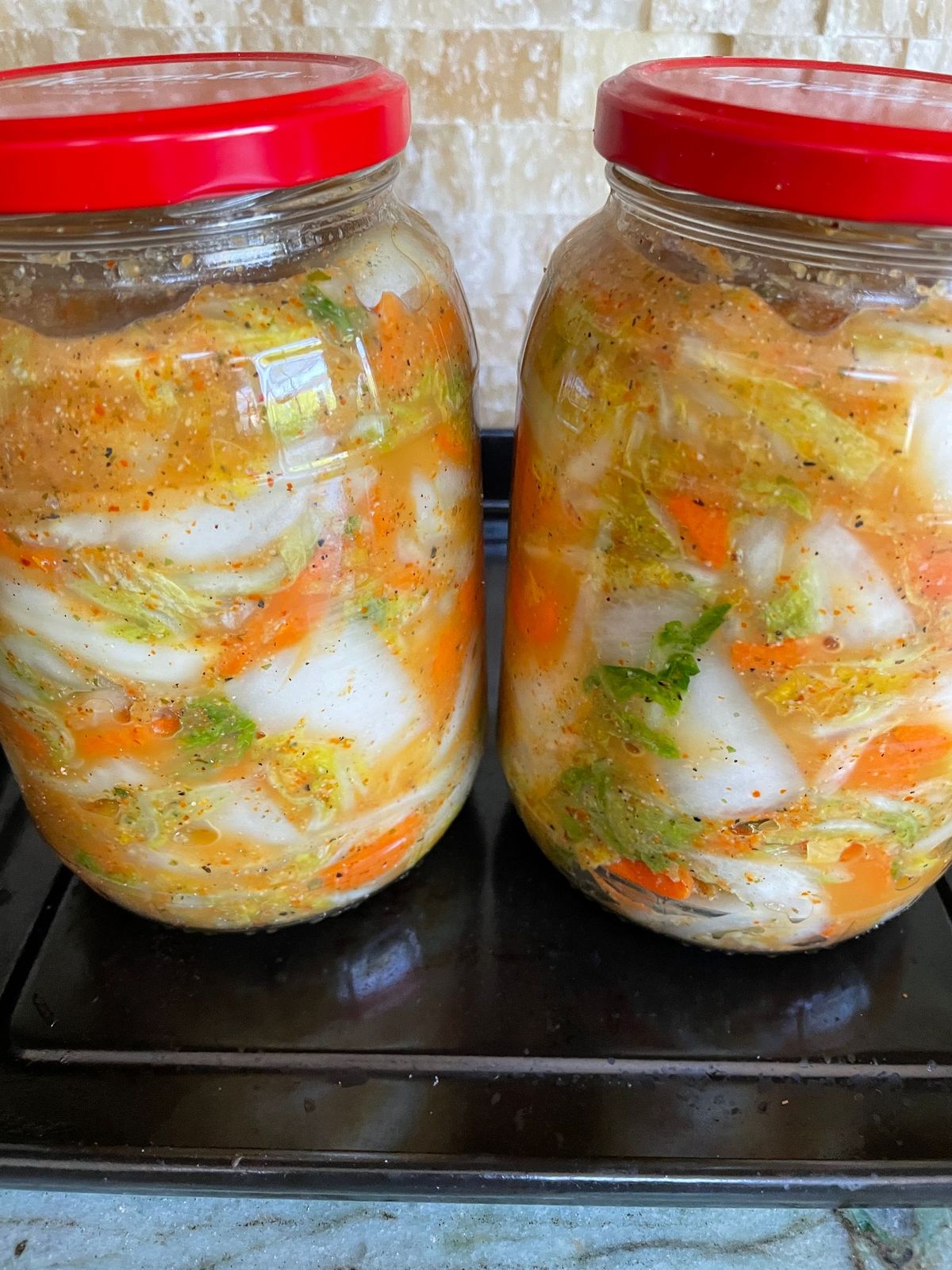Kimchi With Carrots
April 17, 2021
I love kimchi! It's sauerkraut's Korean cousin and is useful in many dishes as a side. I'll eat it with a sausage on a tortilla with mayo and mustard for lunch, or put on top of an aloo parata with some sour cream. Add to fried rice for a spicy and sour kick, or use it to elevate eggs and potatoes. It's satisfying to make, as it self-fermets on the counter from a lovely spicy vegetable melange into a delicious and complex spicy sour fiesta. It keeps super well in the fridge, so it can always be there for you.
This recipe makes approximately 48oz of Kimchi, but it really depends on the size of head of cabbage you use. Easily doubled or quadrupled if you're havin' a party.
Ingredients
- 1 head napa cabbage
- 1/3 cup sea salt or kosher salt (see Recipe Notes)
- Water (see Recipe Notes)
- 1 tablespoon grated garlic
- 1 tablespoon grated ginger
- 1 granny smith apple or pear, peeled and cored
- 1-5 tablespoons Korean Gochugaru or Japanese Togarashi
- 2-3 carrots, sliced medium-thin
Equipment
- Cutting board and knife
- Large bowl or pot
- Plate and something to weigh the kimchi down, like a jar or can of beans
- Colander
- Small bowl
- Clean (!!!) jars with canning lid or plastic lid
- Bowl or plate to place under jar during fermentation
Instructions
- Slice the cabbage: Cut the cabbage lengthwise into quarters and remove the cores. Cut each quarter crosswise into 2-inch-wide strips.
- Salt the cabbage: Place the cabbage and salt in a large bowl. Using your hands (gloves optional), massage the salt into the cabbage until it starts to soften a bit and let sit for 15 minutes.
- Add filtered or bottled water to cover the cabbage. Cover the cabbage in water. Put a plate on top and weigh it down with something heavy, like a jar or can of beans to keep all the cabbage submerged. Let stand for 1 to 2 hours.
- Rinse and drain the cabbage: Rinse the cabbage under cold water 3 times and drain in a colander for 15 to 20 minutes. Do the final rinse with filtered or bottled water (chlorine is bad for fermentation). Rinse and dry the bowl you used for salting, and set it aside to use in step 6.
- Make the paste: Meanwhile, combine the garlic, ginger, and apple or pear in a blender and mix to form a smooth paste. Blend in the gochugaru or togarashi, using 1 tablespoons for mild and up to 5 tablespoons for spicy (I like about 4 tablespoons). If it’s too thick to blend, add a bit of filtered or bottled water until it will blend.
- Combine the vegetables and paste: Gently squeeze any remaining water from the cabbage and return it to the bowl along with the carrots and seasoning paste.
- Mix thoroughly: Using your hands, gently work the paste into the vegetables until they are thoroughly coated. The gloves are optional here but highly recommended to protect your hands from stings, stains, and smells!
- Pack the kimchi into the jar: Pack the kimchi into the jar, pressing down on it until air stops bubbling out and the brine rises to cover the vegetables. Leave at least 1 inch of headspace. Seal the jar with the lid, not too tight since you want gases from fermentation to be able to escape.
- Let it ferment: Let the jar stand at room temperature for 3 to 5 days. You may see bubbles inside the jar and brine may seep out of the lid; place a bowl or plate under the jar to help catch any overflow. Check the kimchi once a day, pressing down on the vegetables with a clean spoon to keep them submerged under the brine. I like to dig down with the spoon to release gasses trapped throughout the jar. Taste a little at this point, to see how it changes from day to day.
- Check it daily and refrigerate when ready: When the kimchi tastes ripe enough for your liking, transfer the jar to the refrigerator. You may eat it right away, but it's best after another few days.
Recipe Notes
- Salt: Use salt that is free of iodine and anti-caking agents, which can inhibit fermentation, like sea salt or kosher salt.
- Water: Chlorinated water can inhibit fermentation, so use spring, distilled, or filtered water if you can.
- Veggies: Feel free to add any other veggies you think may be good. I've had great luck with beets and cauliflower in addition to the carrots.
